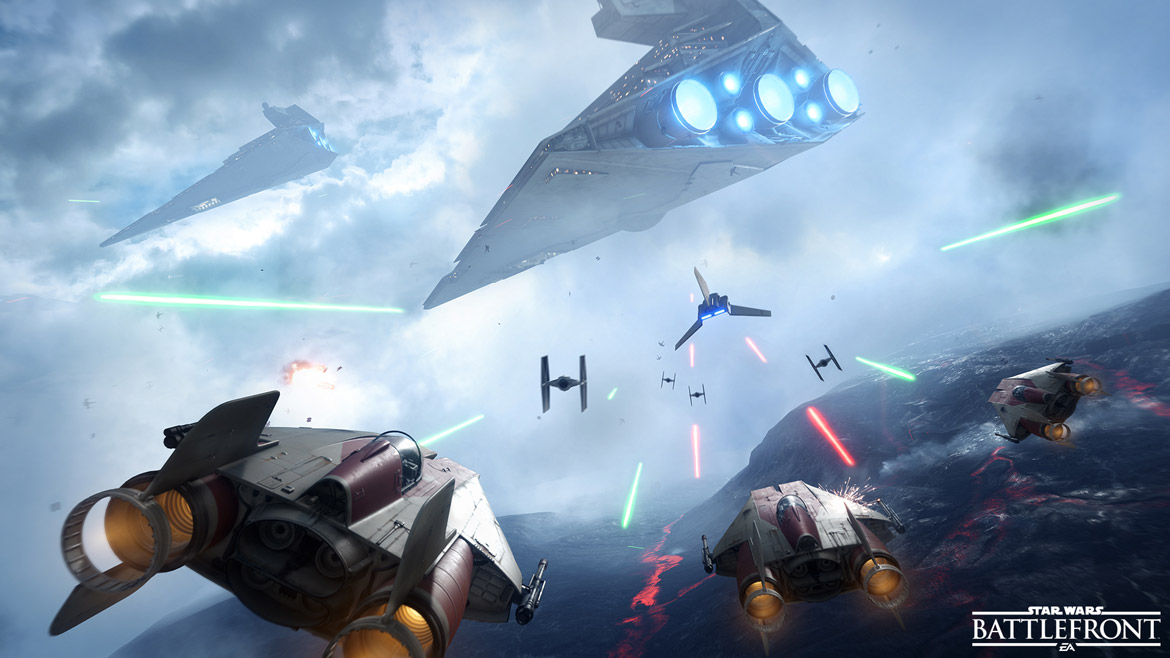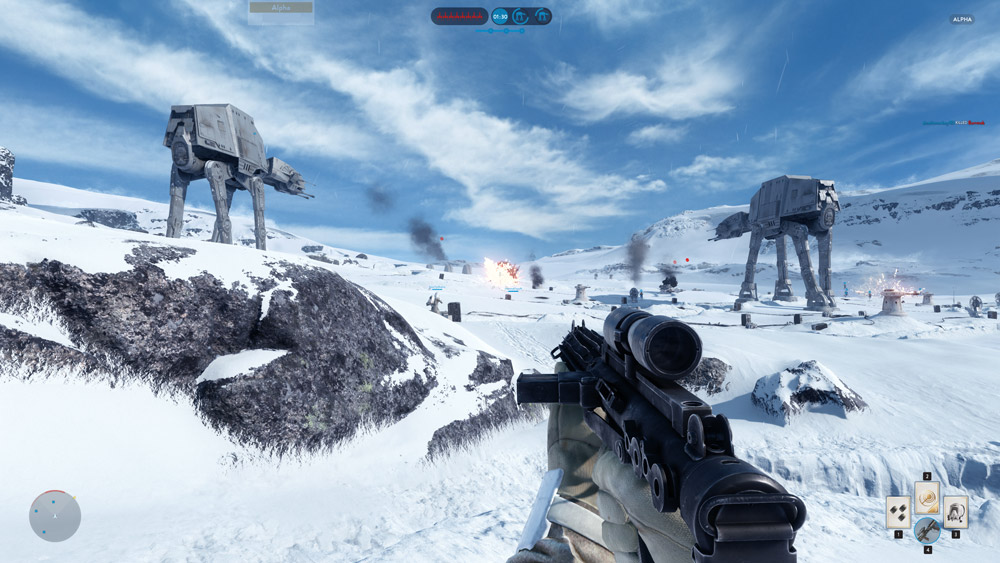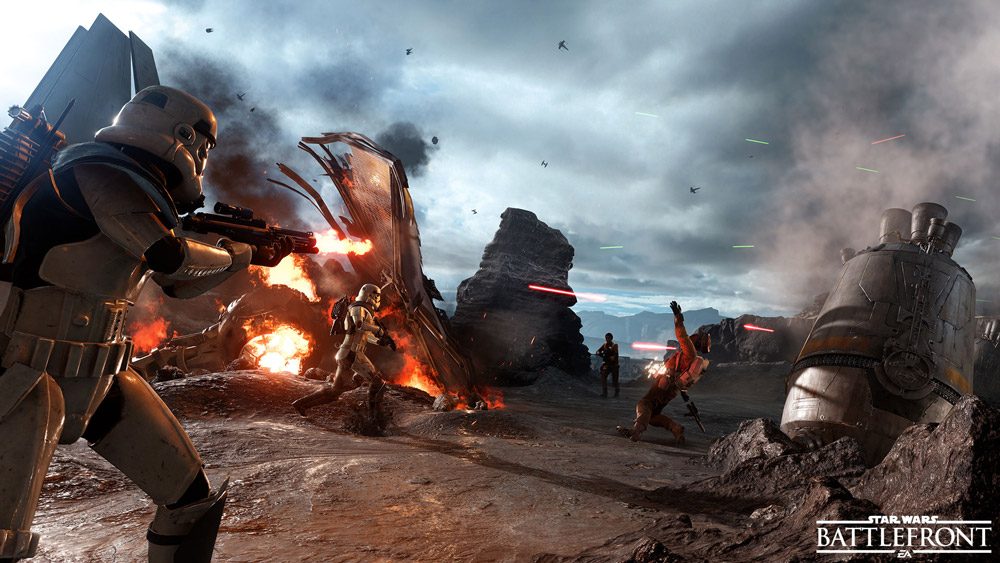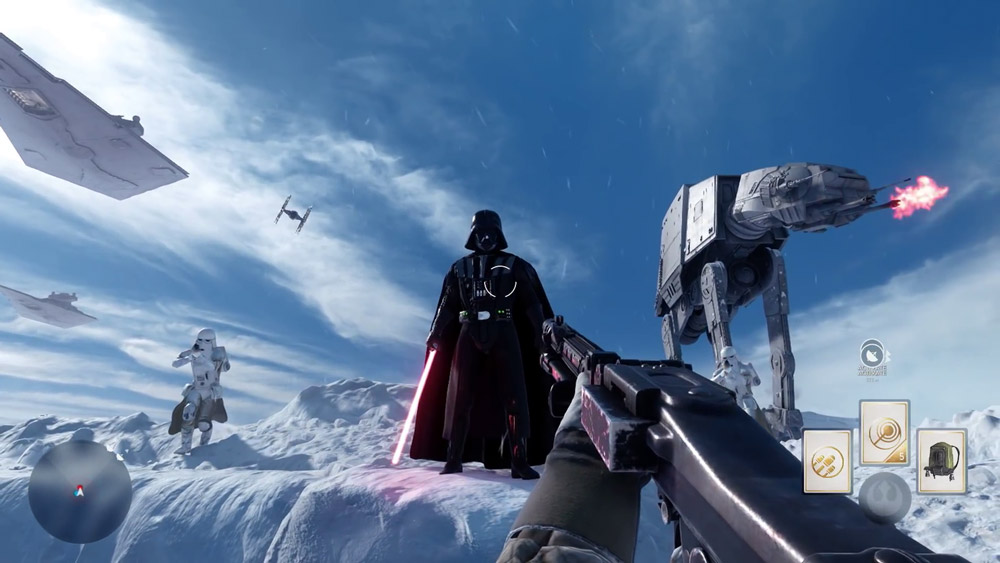TL;DR
Star Wars: Battlefront aims to be the ultimate Star Wars game, boasting stunning visuals and incredible sound design that perfectly capture the essence of the films. You can dive into massive multiplayer battles as Rebels or Imperials on iconic planets like Hoth and Endor, and even play as legendary heroes. However, its biggest drawback is the lack of a compelling solo campaign, making it a game primarily for multiplayer fans. While visually breathtaking and packed with fan service, the gameplay loop can become repetitive, leaving some wanting more depth. If you're a die-hard Star Wars fan or love large-scale multiplayer, this is for you, but if you crave a story, you might feel a bit let down. Read the full review to decide if this visually impressive but narratively lean experience is worth your time.
Developed by Swedish studio DICE, Star Wars: Battlefront possessed the potential to be the definitive Star Wars gaming experience; however…
As anticipated, 2015, particularly the holiday season, was heavily influenced by Star Wars. The primary event was the release of the first installment in the new film trilogy, Star Wars Episode VII: The Force Awakens, continuing the narrative from the sixth film. The Swedish premiere was on December 16th. Coinciding with the film’s release was a wave of merchandise and tie-ins, notably including the third iteration of Disney’s (the current owner of Star Wars) Infinity and a high-budget action game from EA, developed by DICE. Star Wars: Battlefront, the third entry in the Battlefront series set within the Star Wars universe, represents an ambitious and technically impressive achievement. However, the galaxy is not without its shortcomings.
It is important to address the central aspect of Star Wars: Battlefront: it is fundamentally a multiplayer-focused game, emphasizing large-scale battles within designated environments. Players engage in conflicts between the Rebel Alliance and the Galactic Empire across iconic locations such as the ice planet Hoth (from Episode V), the forest moon of Endor (Episode VI), and the lava planet Sullust (mentioned in the original trilogy). The planet Jakku, tied to the new film, was later added as free DLC on December 8th. Additional content will be available to those who purchase the Season Pass. Critically, Star Wars: Battlefront is primarily a multiplayer experience. It lacks a dedicated solo campaign or story mode, instead offering battles on restricted maps against other players or AI opponents. This design choice may not appeal to all players.
For those who missed the open beta, Star Wars: Battlefront is visually stunning. It is arguably the most aesthetically impressive Star Wars game to date. A PC patch has emerged, unofficially adding a documentary-style filter that enhances the graphics to near-photorealistic levels. DICE has meticulously crafted every detail, and the game’s environments, from the terrain of Tatooine to the snow and rain effects on Hoth and Endor, are rendered with exceptional texture and detail. The lighting, particularly the effects of lightsabers and celestial bodies, is also noteworthy. The “Hero” mode allows players to control six iconic characters from the original trilogy: Luke Skywalker, Han Solo, and Princess Leia for the Rebel Alliance, and Darth Vader, Emperor Palpatine, and Boba Fett for the Empire. Initially, the game’s visual fidelity evokes a strong sense of immersion. While the PS4 version typically runs at a resolution slightly below Full HD (1600×900), the Xbox One version operates at a lower resolution (1280×720), effectively making it a 720p game. PC users with sufficiently powerful hardware can experience the game at 1440p resolution with enhanced graphical details. The PS4 version remains a well-optimized port. The frame rate is consistently maintained at 60 fps, except during split-screen play, where it is halved and the resolution is increased to 1080p to improve visual clarity given the reduced field of view. DICE has delivered a solid experience across all platforms. While the PC version offers the highest graphical fidelity, the PS4 version is a strong alternative, and the Xbox One version remains visually appealing despite its lower resolution.
The audio design is equally impressive. The game incorporates classic musical scores, including the “Imperial March,” and nearly every iconic sound effect from the films. From the roar of TIE Fighters to the hum of lightsabers, the soundscape is enriched by subtle details such as the crunch of snow underfoot on Hoth. The sound mix effectively establishes an immersive, large-scale war environment. However, positional audio cues for enemy fire are not always accurate. The heads-up display remains the most reliable indicator of enemy positions. The controls are responsive, largely due to the smooth frame rate. However, the dogfight mode (aircraft combat) feels somewhat unintuitive due to the right stick being used for steering (though this can be remapped). Star Wars: Battlefront appears to be designed for accessibility. Aiming and shooting are relatively forgiving, allowing players to achieve impressive kills without requiring exceptional marksmanship.
Initially, it is easy to be captivated by the gaming experience that Star Wars: Battlefront provides. The game clearly demonstrates a passion for the Star Wars universe, and its technical execution is impressive. Players can engage in classic scenarios, such as piloting a speeder bike through the forests of Endor, engaging TIE Fighters with an X-Wing, and confronting waves of enemies as iconic heroes. The initial installation process even included a survival round with Darth Vader on Hoth. However, once the initial excitement subsides, the gameplay loop can become repetitive and somewhat stale. Star Wars: Battlefront resembles a visually stunning but fragmented film, containing great moments but lacking a cohesive narrative. While large-scale battles, hero characters, and recreations of iconic film moments are enjoyable, Star Wars: Battlefront ultimately feels somewhat incomplete. For dedicated multiplayer enthusiasts and Star Wars fans, this game is a worthwhile purchase. However, players who value a compelling story and a robust solo mode may find the Star Wars: Battlefront experience intense but ultimately limited. This is unfortunate, given the richness and depth of the Star Wars universe.
DICE has demonstrated its technical capabilities and could easily deliver a comprehensive Star Wars experience. A narrative-driven campaign leveraging DICE’s cinematic gameplay, technical expertise, and evident appreciation for the source material has significant potential. As it stands, Star Wars: Battlefront is a tantalizing appetizer, enjoyable in short bursts but ultimately leaving players wanting more.




